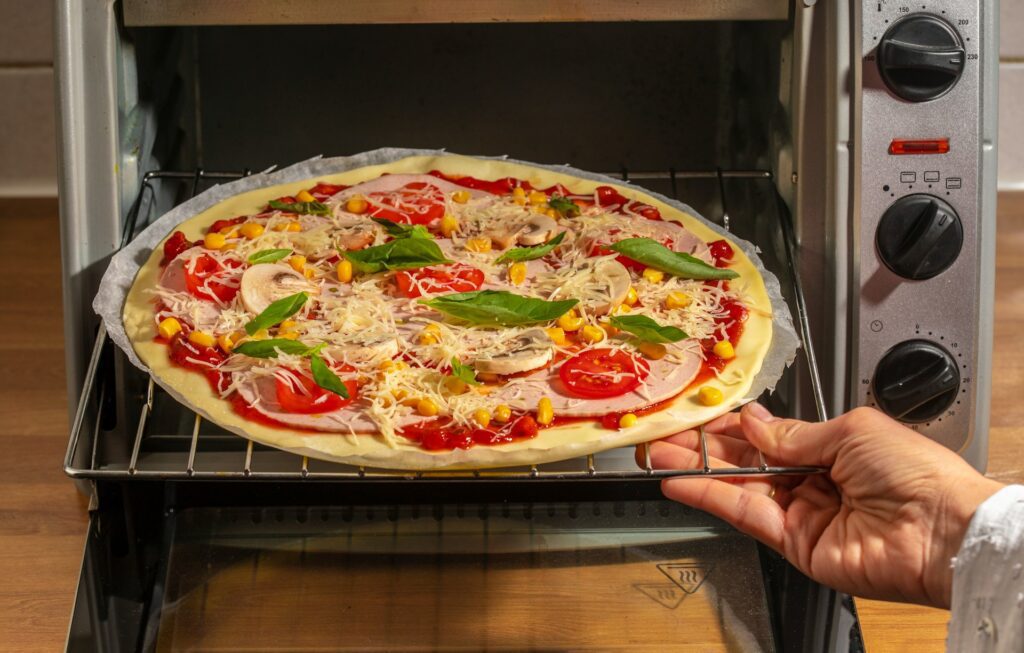Pizza is so much more than just a beloved comfort food; it is a blank canvas on which culinary artistry can be expressed and shared among friends and family. Whether a seasoned home cook or a newcomer to the world of pizza making, having the ability to create delicious, restaurant-quality pizza at home is a skill that not only brings joy to your taste buds but also creates unforgettable moments of love and laughter around the table. From mastering the complexities of a perfect crust to achieving the ideal balance of flavors with your toppings, the art of homemade pizza offers endless possibilities to elevate your culinary game and delight those you hold dear.
In this informative and engaging blog post, we at Doreen’s Pizzeria invite you to join us as we reveal the essential techniques and pro tips that will set you on the path to homemade pizza perfection. From understanding the science of dough making to selecting the ideal cooking method for your chosen crust, our expert guidance will empower you with the knowledge and confidence you need to create truly remarkable pizza creations in your own kitchen.
1. Dough Fundamentals: The Science Behind the Perfect Pizza Dough
The foundation of any great pizza is its dough. Understanding what goes into creating a flawless dough will set the stage for elevated pizza making in your home. Let’s delve into the key elements of pizza dough making:
– Ingredients: The basic components of pizza dough are flour, water, yeast, salt, and often a touch of sugar and oil. The type and quality of flour have a significant impact on the texture and taste of the crust. High-gluten flour, like Tipo “00” or bread flour, is a popular choice for creating that ideal balance of crispy and chewy crusts.
– Hydration and Fermentation: The percentage of water in relation to flour, known as hydration, affects the final dough texture. Higher hydration results in a more pliable, airy dough, while lower hydration yields a denser, drier dough. The fermentation process, during which the dough is left to rise, contributes to the crust’s flavor development and overall texture.
– Kneading Techniques: Proper kneading technique is crucial to achieve a smooth, elastic dough that forms the ideal crust. Kneading develops gluten, which provides structure and elasticity to the dough. The windowpane test, where a small piece of dough can be stretched thin enough to see light through it, can help determine if the gluten is sufficiently developed.
2. Cooking Methods and Equipment: Perfecting the Home Pizza Experience
Once you have the perfect dough, the next step is choosing the best method and equipment for cooking your pizza. While a traditional wood-fired oven may not be accessible to most home cooks, there are numerous alternatives that can still yield exceptional results.
– Pizza Stone: A pizza stone is a ceramic or stone surface that retains and evenly distributes heat. By preheating the stone in your oven, you can achieve higher temperatures and better mimic the conditions of a wood-fired oven, which is essential for an authentic pizza crust.
– Pizza Steel: Similar to a pizza stone, a pizza steel is a flat, heavy metal surface that conducts heat more efficiently. Because it heats up faster and maintains a more stable temperature, pizza steels can deliver quicker, more consistent cooking results.
– Cast Iron Skillet: For those looking to create a deep-dish or pan-style pizza, a cast iron skillet can be the perfect choice. With unmatched heat retention and even cooking, a well-seasoned cast iron skillet can produce a beautifully crisp and tender crust.
3. Mastering Toppings and Flavor Combinations: Creating Culinary Harmony
The adornment of your pizza with toppings is where the true artistry comes into play. Knowing which toppings and flavor combinations work well together can elevate your pizza from good to unforgettable.
– Sauce Selection: Choosing the right sauce is an important element of achieving the perfect flavor profile for your pizza. Tomato-based sauces are classic, but options like pesto, alfredo, or even barbecue sauce can create bold and unique tastes.
– Balanced Toppings: Less is often more when it comes to selecting toppings. Avoid overloading your pizza with too many ingredients, as this can lead to a soggy crust and uneven cooking. Instead, focus on creating a harmonious balance of flavors: select a few key toppings, and consider complementary elements like fresh herbs or a drizzle of flavorful oil.
– Cheese Choices: The type of cheese you use can make a significant impact on the overall taste of your pizza. Mozzarella is a classic choice, but branching out to options like feta, gorgonzola, or fontina can add complexity and depth to your pizza creation.
4. Expert Techniques and Tips: Enhancing Your Homemade Pizza Craft
The road to pizza mastery is paved with a wealth of techniques and tips that can help refine your skills. Here are some expert pointers to elevate your homemade pizza game:
– Preheating: To achieve restaurant-quality crust, preheat your oven to its highest temperature, along with your pizza stone or steel, for at least an hour before cooking.
– Maintaining Moisture: If using toppings with high moisture content, like fresh tomatoes or mushrooms, it helps to partially cook or drain them before adding to your pizza to prevent a soggy crust.
– Dressing Your Pizza: A simple drizzle of high-quality extra-virgin olive oil or a sprinkle of freshly grated Parmesan cheese can add an extra layer of flavor to your pizza and provide a more refined finish.
Your Journey to Homemade Pizza Perfection Awaits at Doreen’s Pizzeria
Armed with the knowledge of essential techniques and pro tips, you possess the tools to bring pizza mastery into your home kitchen. As you refine your skills and explore new flavor combinations, the possibilities to create unforgettable dining experiences with your loved ones become endless.
Inspire your pizza creations – visit Doreen’s Pizzeria today! Discover the diverse flavors and artisan craftsmanship we offer, and let your imagination run wild as you bring those same techniques to life in your own home.


